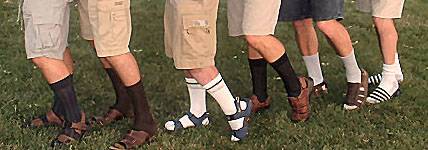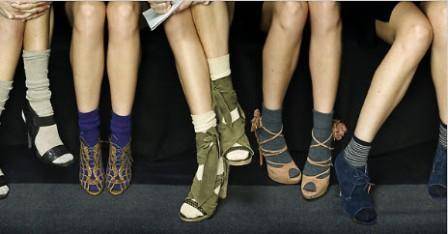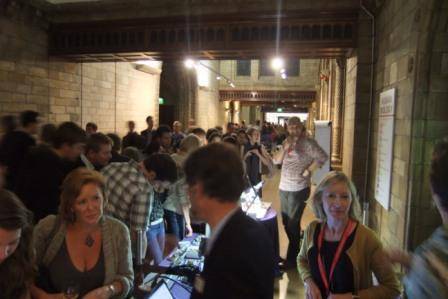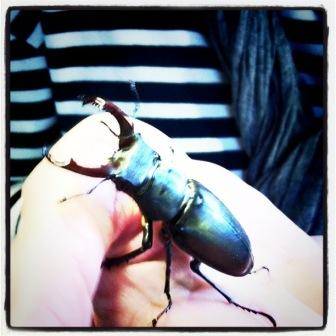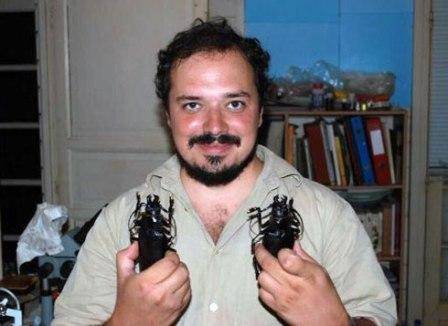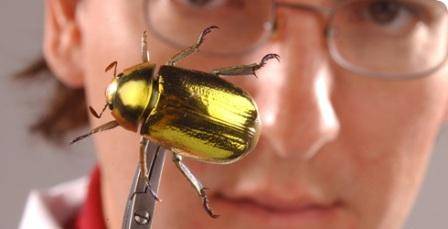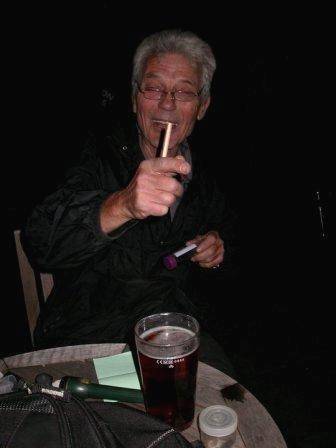So, come Friday 23 September, it’ll be time for us dusty old curators to kick off our sensible sandals and get fashion forward for this year’s free Science Uncovered event.
If you were expecting this:
...think again, because for one night only we are sexy, sophisticated and scientific – like this:
No? If you don’t believe me, you better come along to find out…
Science Uncovered 2010 was the first year that the Museum opened its doors to the public on such an unprecedented scale. We were expecting a few thousand; but after a few weeks of blogging, twittering and Face-booking over 6000 of you came to see the secrets of the Natural History Museum revealed – some for the first time.
And not only our prized treasures of science, but our scientific staff, who, just like our specimens, don’t get out much! My experience last year was incredible, from 5pm to 10pm my colleagues and I did not stop talking – to you! It was simply amazing, invigorating and yes, exhausting to have the opportunity to engage on such a wide scale, and also on such an intimate scale with hundreds of conversations about the Museum, our specimens, and most pertinently our research.
Last year I spent my time on the Identification and Advisory Service’s ‘Identification Roadshow’ where we invited you to bring along your natural history finds for on the spot identification. Here I am, looking a little bit overwhelmed, along with Stuart Hine, Richard Lane and Gill Stevens in the foreground, along Dino-way, where this year you will find the entomology station.
But this year I move over to my first love, the beetles!
Here’s one I found in Southeast London this summer, you may recognise it? And it may make an appearance on the night!
With over 400,000 species of beetles in the world, and the NHM’s collection holding representatives of at least half of that figure, it’s quite hard to choose what we might talk about or put on display on the night. But because beetles are so diverse and occupy so many niches in the natural and unnatural environment we won’t be short on conversation; naturally we will show you specimens that exhibit sexual dimorphism (differences between the sexes), the incredible size range of beetles – from the smallest to the largest:
Here is Conrad, a Scarab expert who will be there on the night, with one of the largest beetles in the world, the aptly named Titanus giganteus which may make an appearance…
We will also show you some of the most beautiful creatures in the world, for example this wonderful Plusiotis, a member of the shining leaf-chafer beetle sub-family. Chrysina aurigans (Rothschild & Jordan, 1894): collected by Martin Brendell in the cloud forests of Costa Rica.
Here is Max Barclay, who will be available on the night at our entomology fieldwork Science Station armed with field equipment and some examples of what we find when we head off to research remote areas throughout the world.
Other colleagues include Hillery Warner, who is expert in photographing our specimens; see some of her work on Flickr here.
And the formidable Peter Hammond, previously senior researcher in Coleoptera, and now a Scientific associate, here is Peter, armed with those two most important of entomologist accessories: a pint of beer and a specimen tube (for beetles, of course…!)
We can’t wait…can you?
About Science Uncovered 2011:
Science Uncovered is a free event on Friday 23 September 2011 at the Natural History Museum. All events and tours at Science Uncovered will be free but, due to time and space constraints, some will require you to book free tickets in advance.
To find out more visit Science Uncovered on the Museum’s website.
The Natural History Museum at Tring, Hertfordshire, will also be holding its own Science Uncovered event. Find out more about Science Uncovered in Tring.
Online community
To get involved before the night, visit our Science Uncovered online community where you can get previews of what’s happening and join in with discussions and debates.



